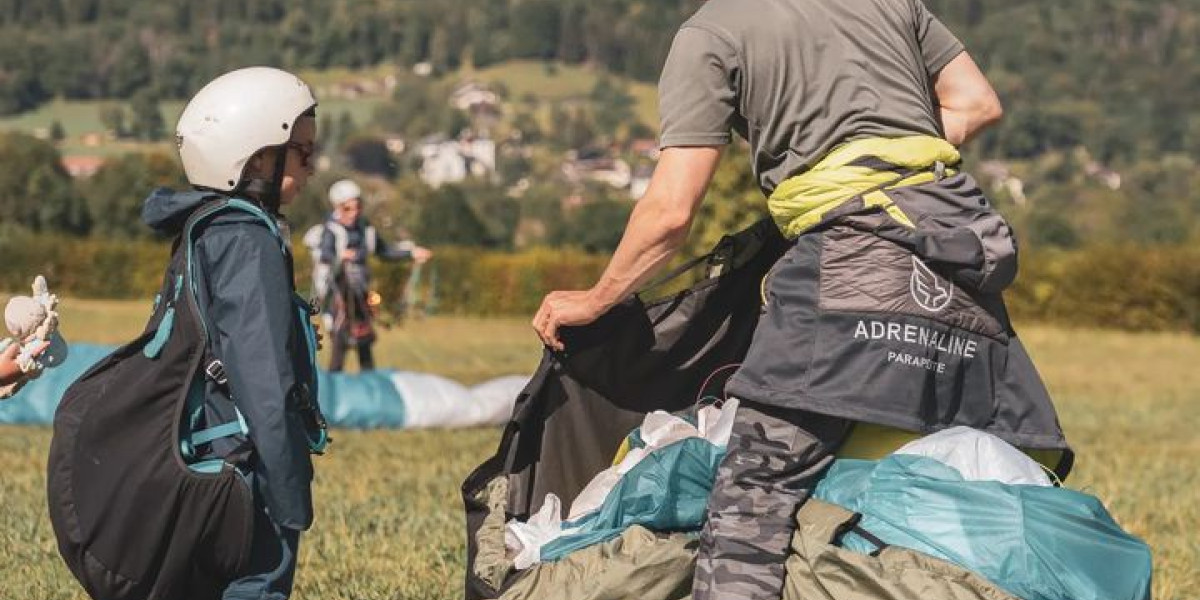Paragliding is a sport that provides pleasant sensations. For a safe flight, but also for the storage of the glider, various steps have to be taken, both simple and very technical. A good storage of the wing is essential to keep it in good condition for a long time. You have to pay attention to different elements during practice, when packing, cleaning and storage. Adrenaline Parapente Courchevel offers you its advice to keep your paraglider in good condition.
The sail, the main element of paragliding
A paraglider consists of a wing (also called a sail), from which the harness is suspended. This wing is made almost entirely from a strong, lightweight fabric, specially designed to give your aircraft its full performance. The canopy has different compartments, called "chambers", in which the air flows to give it its shape. Above all, it is important to choose your paraglider carefully.
Shaped like an aeroplane wing, the paraglider's wing gives lift to the aircraft. This force counteracts gravity to allow the paraglider to slow its fall along the vertical axis, while the glider flies horizontally. It is therefore essential to pay attention to the wing, because once damaged, safety is at stake.
Tips to follow when using a paraglider
By taking our tips into account when using your paraglider, you can better maintain its performance and extend its life. You should avoid :
- unnecessary exposure to UV light,
- trampling the glider on the ground and not leaving it lying around,
- hot temperatures.
UV rays are a factor in the ageing of the paraglider. First the colours of the wing degrade, then the fibres of the wing and then the coating... Even if modern equipment is better protected from UV rays, the glider is already highly exposed to them in the air. You should therefore avoid leaving it in the sun for long periods of time.
Not leaving the glider on the ground and not walking on it are also important to keep it in good condition. Rubbing could damage the fabric. You should also not store it in a very hot place, as the fabric of the wing will not withstand excessive temperatures. Places like the trunk of a car exposed to the sun or next to a radiator should be avoided.
How to fold the sail successfully?
Folding your paraglider correctly is essential to maintain its quality. Make sure you do not overfold the glider and fold the leading edge correctly. Fold one cell at a time, keeping the leading edge flat to maintain the characteristics and performance of your fabric.
Also make sure that you do not fold the glider with trapped insects, stones, plants or other foreign objects inside the wing. Before folding, remove any small intruders that may have found their way into the glider. This is a simple precaution to avoid unpleasant surprises.
You can find all our best practices and news on the paragliding blog.
Tips for cleaning the paraglider
To clean the paraglider, you should lay it out on a fairly flat, dry and clean surface. When removing a stain from the glider, do not use abrasive products or solvents. The risk is that the product will attack the fabric, making your sail porous and less resistant to breakage.
Simply use water and mild soap and make sure you dry well afterwards. You can then proceed to store the glider in the best possible conditions. The life of your flying equipment can be greatly improved if you follow these tips carefully.
How to store the paraglider?
The glider should also be stored correctly to avoid any inconvenience. After cleaning the glider, you should only fold it when it is completely dry. After checking that there is no more moisture, fold the glider in accordance with the points mentioned above. You can then pack the glider into its bag without compressing it too much. Ideally, the glider should be stored in a dry, temperate place, away from insects and rodents. The storage bag should be left ajar to allow air to circulate inside.
You are now aware of the main elements that can accelerate the deterioration of your sail. Our tips will help you to store your glider properly during periods when you are not planning to fly.

